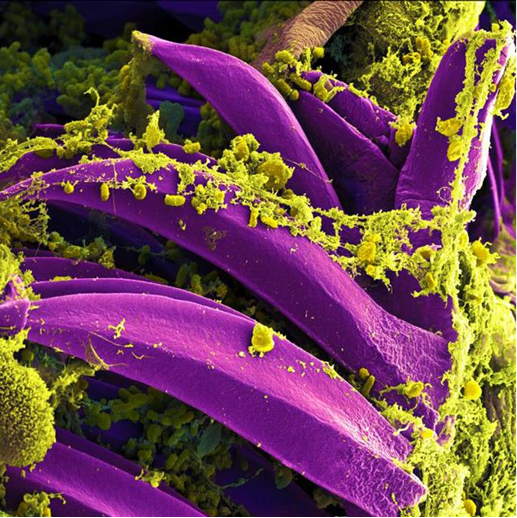Making Plague a Disease of the Past in Uganda and the Democratic Republic of the Congo

This digitally colorized scanning electron microscopic image depicts yellow colored Yersinia pestis bacteria, which had gathered on the proventricular spines of a Xenopsylla cheopis flea. These spines line the interior of the proventriculus, a part of the flea’s digestive system. The Y. pestis bacterium is the pathogen that causes plague. Photo courtesy of the National Institute of Allergy and Infectious Diseases
NCEZID scientists teamed up with the Uganda Virus Research Institute and its Arua Field Station to strengthen the prevention, detection, and control of plague in Uganda. Plague is a rare but fatal infection found throughout much of the world, including northwestern Uganda and neighboring Democratic Republic of the Congo. Arua Field Station staff have been instrumental in engaging with communities, health care workers, and traditional healers to promote the early detection of plague. They also perform reference diagnostics, use animal-based surveillance to detect plague in rodents, and collaborate on research with NCEZID.